Frida Escobedo discusses her design for the 2018 Serpentine Pavilion

A courtyard design that unites Britain and Mexico via a journey through space and time; an emerging Mexican architect; the youngest ever participant, and indeed only the second female one, after Zaha Hadid; there are many reasons to sit up and take notice of this year’s Serpentine Pavilion. We meet with the architect behind the 2018 design, Frida Escobedo, to find out more.
W*: Good morning Frida, please could you tell us a little bit about yourself?
FE: I was born and raised in Mexico City, I did my architecture degree at the Universidad Iberoamericana and I started working on projects on my own, right after I finished school. It is not unusual in Mexico. It is a big advantage and a big disadvantage, because it means that you really don’t get to learn an office’s structure, such as the financial structure, by working with somebody else. You learn the hard way and you also don’t have a lot of money, but it gives you a lot of creative freedom and motivation.
W*: What was your first project?
FE: My first project was when Alejandro Alarcón and I were associated and his mother asked us to do a tiny renovation and extension for her. Of course we convinced her to commission a whole new apartment. After seven years I came across the Public Domain program at the Harvard Graduate School of Design in Boston and applied. At the time I was also working on a competition for La Tallera [art gallery]. I flipped the coin and thought, maybe I will get accepted in GSD or maybe I will win the competition. But I got both! And it was amazing, but very challenging, both in terms of geography and time.
W*: When did the Serpentine invite you to do the pavilion, and what were your first thoughts?
FE: I met Hans Ulrich [Obrist, artistic director at the Serpentine Gallery] in 2013 or 2014 when he was doing the 89plus Americas Marathon program at Museo Jumex. They needed a stage/pedestal/podium and I designed it for them. Many years after – late last year – I received a letter from the Serpentine Gallery. It was an invitation to propose something for the pavilion. I was excited and in shock! So many important architects have designed this pavilion so it was a challenge to try and come up with something that was new, but at the same time reflects the spirit of the office.
W*: Did you follow the pavilion series before, have you visited any of the past ones?
FE: Yes, but I only had the chance to go to the Bjarke Ingels pavilion, I have seen the rest in photos only.
W*: What does it mean to you to design a pavilion?
FE: It is a public space, but also a platform to show what you think about space and how you want to deal with space. We have been working with temporary structures for a while now. They become little labs to test ideas on. Because they are so compressed as a project, they allow us to test, experiment and see things that we normally wouldn’t see with larger projects.
W*: How would you describe your design for the pavilion, in one sentence; what is this particular test about?
FE: It is about time, temporality and personal experience.
W*: What inspired the design?
FE: When you are designing a pavilion, especially one like this that will be here for a few months and is then going to move somewhere else, you are designing for a very specific site, but also for anywhere. It’s about understanding this idea of time, temporality, space, locality and how we understand those things in a more abstract way. It is something that is very local but also placeless. The way for us to tie it to the site, and to free it from the site, was to work with the Meridian line.
We were also thinking about the idea of interior and exterior and how you can be inside, but also out. We wanted to create this closed courtyard that is inside the park, which in turn is inside the city of London; a Russian doll of interiors. We were inspired by La Mezquita [the Mosque] in Cordoba.
So, we tied the pavilion’s footprint to the geometry and the location of the gallery. But then we have a second rectangle that intersects that first one, and it is aligned to the Greenwich Meridian. This is our subtle nod to that abstract idea of time and space. The rotation between the two rectangles creates three spaces – two smaller courtyards and a central one. The walls are very porous. We used British roof tiles to make a lattice. It seems quite opaque from a distance but as you approach it becomes very transparent.
W*: What would you like the visitors to take away from the experience of being in your pavilion?
FE: It is about encounter – encounters with other people, but also with yourself.
W*: What next? What other projects are you currently working on?
FE: We are a very diverse office. We are doing public sculpture in the botanical gardens in Orleans; we are doing exhibition design, housing projects in Mexico – both public and private – a retail space in New York, and two hotels, also in Mexico. There are nine of us in the office – I have the best team.
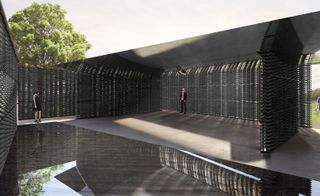
‘We wanted to create this closed courtyard that is inside the park, which in turn is inside the city of London; a Russian doll of interiors,’ says Escobedo
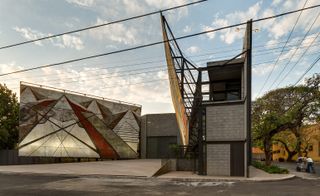
Escodebo’s La Tallera art gallery in Mexico’s Morelos district was completed in 2010 and is one of her first big competition wins
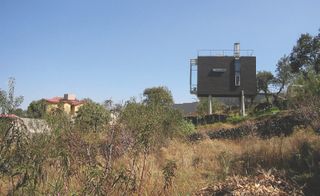
Casa Negra is Escobedo’s very first ground-up new built project, created in 2004 in a suburb of Mexico City.
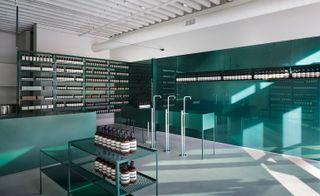
More recently, the architect designed the Aesop shop in West Loop, Chicago in 2017
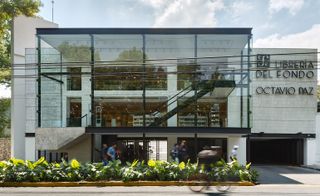
The Octavio Paz Library in Mexico City was created by Frida Escobedo in 2014

The library project was a renovation in the southern district of Coyoacán

This installation is one of the architects latest works, created as part of the Biennale d’architecture in Orleans, France.

Another Aesop retail interior by Frida Escobedo is the Coconut Grove store in Miami, completed in 2016
INFORMATION
For more information visit the website of Frida Escobedo
Wallpaper* Newsletter
Receive our daily digest of inspiration, escapism and design stories from around the world direct to your inbox
Ellie Stathaki is the Architecture & Environment Director at Wallpaper*. She trained as an architect at the Aristotle University of Thessaloniki in Greece and studied architectural history at the Bartlett in London. Now an established journalist, she has been a member of the Wallpaper* team since 2006, visiting buildings across the globe and interviewing leading architects such as Tadao Ando and Rem Koolhaas. Ellie has also taken part in judging panels, moderated events, curated shows and contributed in books, such as The Contemporary House (Thames & Hudson, 2018), Glenn Sestig Architecture Diary (2020) and House London (2022).
-
 Perfumer H has bottled the scent of dandelions blowing in the wind
Perfumer H has bottled the scent of dandelions blowing in the windPerfumer H has debuted a new fragrance for spring, called Dandelion. Lyn Harris tells Wallpaper* about the process of its creation
By Hannah Tindle Published
-
 The best fashion moments at Milan Design Week 2024
The best fashion moments at Milan Design Week 2024Scarlett Conlon discovers the moments fashion met design at Salone del Mobile and Milan Design Week 2024, as Loewe, Hermès, Bottega Veneta, Prada and more staged intriguing presentations and launches across the city
By Scarlett Conlon Published
-
 LEVC’s L380 is a truly magnificent minivan
LEVC’s L380 is a truly magnificent minivanThe London Electric Vehicle Company’s L380, is a magnificent minivan designed for upscale long-distance travel, as the maker of the London Taxi branches out into all-purpose EVs
By Jonathan Bell Published
-
 Yinka Shonibare considers the tangled relationship between Africa and Europe at Serpentine South
Yinka Shonibare considers the tangled relationship between Africa and Europe at Serpentine SouthYinka Shonibare‘s ‘Suspended States’ at Serpentine South, London, considers history, refuge and humanitarian support (until 1 September 2024)
By Tianna Williams Published
-
 Gavin Turk subverts still-life painting and says: ‘We are what we throw away’
Gavin Turk subverts still-life painting and says: ‘We are what we throw away’Gavin Turk considers wasteful consumer culture in ‘The Conspiracy of Blindness’ at Ben Brown Fine Arts, London
By Rowland Bagnall Published
-
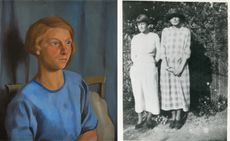 Dorothy Hepworth and Patricia Preece: Bloomsbury’s untold story
Dorothy Hepworth and Patricia Preece: Bloomsbury’s untold story‘Dorothy Hepworth and Patricia Preece: An Untold Story’ is a new exhibition at Charleston in Lewes, UK, that charts the duo's creative legacy
By Katie Tobin Published
-
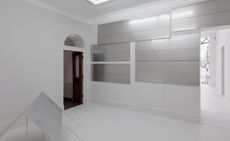 Don’t miss: Thea Djordjadze’s site-specific sculptures in London
Don’t miss: Thea Djordjadze’s site-specific sculptures in LondonThea Djordjadze’s ‘framing yours making mine’ at Sprüth Magers, London, is an exercise in restraint
By Hannah Silver Published
-
 ‘Accordion Fields’ at Lisson Gallery unites painters inspired by London
‘Accordion Fields’ at Lisson Gallery unites painters inspired by London‘Accordian Fields’ at Lisson Gallery is a group show looking at painting linked to London
By Amah-Rose Abrams Published
-
 Fetishism, violence and desire: Alexis Hunter in London
Fetishism, violence and desire: Alexis Hunter in London‘Alexis Hunter: 10 Seconds’ at London's Richard Saltoun Gallery focuses on the artist’s work from the 1970s, disrupting sexual stereotypes
By Hannah Silver Published
-
 Wayne McGregor’s new work merges genetic code, AI and choreography
Wayne McGregor’s new work merges genetic code, AI and choreographyCompany Wayne McGregor has collaborated with Google Arts & Culture Lab on a series of works, ‘Autobiography (v95 and v96)’, at Sadler’s Wells (12 – 13 March 2024)
By Rachael Moloney Published
-
 Danielle Brathwaite-Shirley confronts gaming, VR and rebirth at Studio Voltaire
Danielle Brathwaite-Shirley confronts gaming, VR and rebirth at Studio VoltaireDanielle Brathwaite-Shirley has opened her first institutional solo exhibition, ‘THE REBIRTHING ROOM’, at Studio Voltaire, London
By Hannah Silver Published